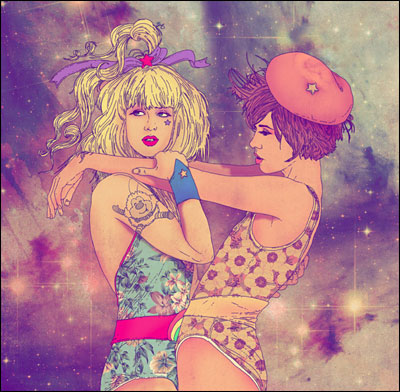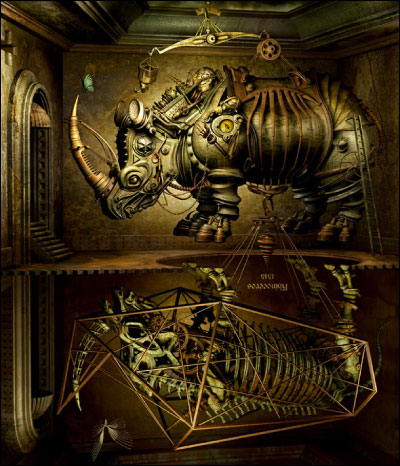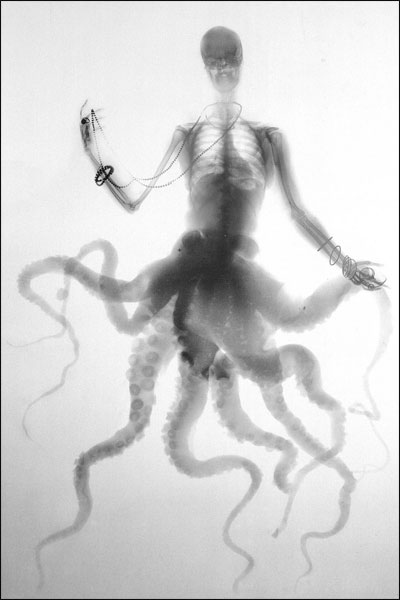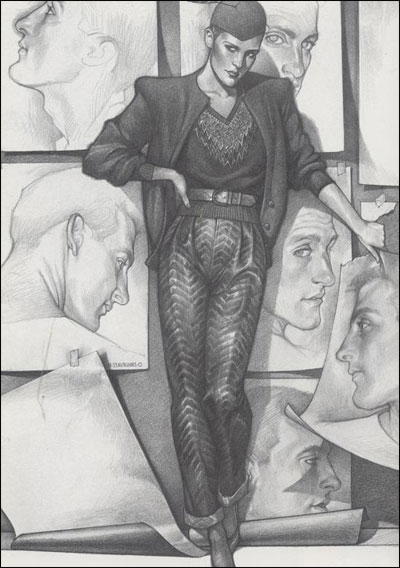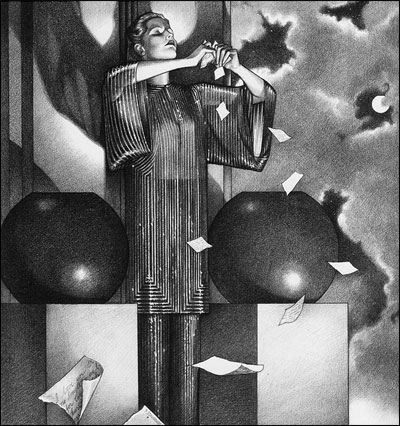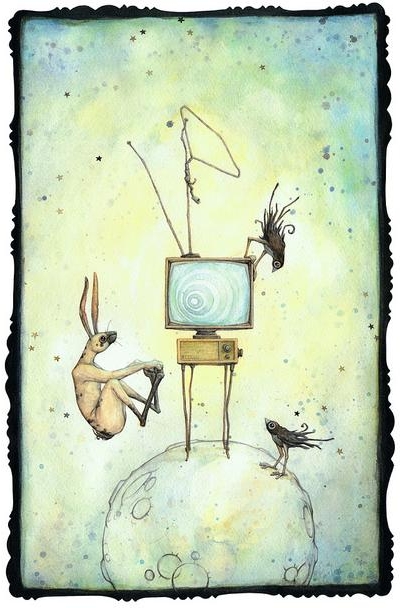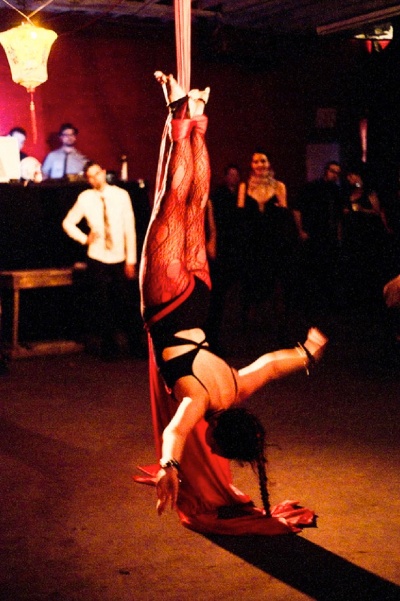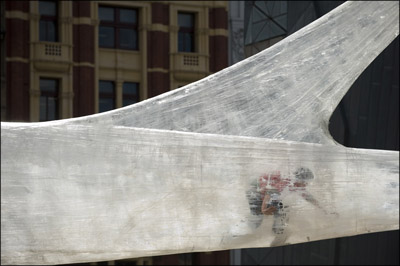The Tango, the Quark, and the Allegory of Love
Please welcome guest blogger Eden Gallanter! Eden is a painter and writer. She also works on sustainable urban planning and restoration ecology in landscape architecture. In addition to these talents, Eden is an accomplished tango dancer. In this article, Eden tells tales of subatomic physics and Mannerist painting – and what they have to do with tango, a fascinating dance form not yet covered on Coilhouse. Enjoy! – Ed.
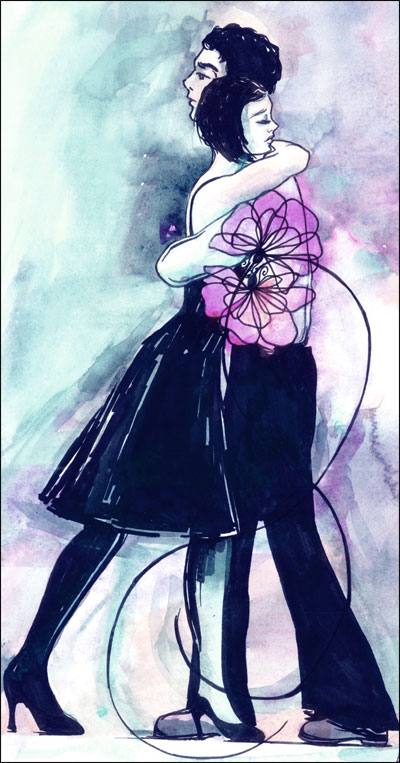
Article and illustration by Eden Gallanter
Argentine Tango is the most difficult of all partner dances. Intimidating, overwhelming, and endlessly complex, one may reasonably wonder at the continued prominence of social Tango dancing. After all, beginners can expect to spend many months in practice before venturing out to a Tango dance (called a Milonga), and even then, most dancers must endure a few years, at least, of rampant unpopularity. Even those who are skilled in other partner dances, such as Swing, Salsa, or Waltz, usually find themselves disconcertingly back at beginner level when learning the Argentine Tango. Everything you hated about your middle school dance instruction (whether this involved a finishing school-style class in ballroom dancing or just a traumatic experience at a school dance) is amplified, all of your insecurities lining up to greet you if you decide to learn Tango, the most demanding of all social dances.
Then what are people coming back for? The truth is, it’s the very qualities that make Tango so difficult that also make it so rewarding. Tango isn’t hard because of all the moves you must learn, it is hard because it relies on the partner connection more than any other dance. If you’re dancing a Viennese Waltz and your partner doesn’t know what he or she is doing, you can at least dance the correct steps anyway and hope that your partner catches on– but if you’re dancing a Tango, this is next to impossible. You can’t move a single step if your partner can’t feel where you are, or where you’re going. Leaders have somewhat more control over this connection than followers do, but the lesson is the same: without a physical understanding of the position and direction of your partner, there is no dance. In Tango’s closed position, the two of you are leaned against one another, the centers of your chests aligned. You are sharing a single gravitational axis, and, for better or for worse, you move as one. This is precisely what makes this dance both terrifyingly difficult and, at the same time, perilously, wonderfully, heart-stoppingly intimate.
Bautiful tango video to post from a festival in Montreal set to Cat Power’s weird, moody cover of “(I Can’t Get No) Satisfaction.”
This heavy emphasis on partner connection doesn’t mean there aren’t plenty of moves to learn in Tango. There is an amazing array of styles, steps, and decorations to learn, though all depend strongly on the partner connection in order to work. The boleo contra (“throw against,” in Spanish) is made with a bent knee while the whole body rotates, drawing a graceful circle in the air with the toe. The boleo contra results from an abrupt change of direction between you and your partner, releasing the energy of opposite motion; done quickly, it feels like the beating of wings, each partner using the other’s momentum to execute a series of brief kicks.
The partner connection is not the only relationship that matters on the dance floor, though it is of the most vital importance. The best instructors in Buenos Aires teach that there are in fact no less than five “partners” in a single dance: the partner, the floor, the other couples, the music, and yourself. Tango dancers (called tangueros) must constantly pay attention to all of these. For instance, if a follower does not move to the tempo of the music, the leader will not be able to stay on beat either, and a vital framework for the communication of one another’s movements is lost. Negotiating relationships with all five “partners” is essential to the dance, even though all do not require equal attention (and, in fact, for the follower there are only four partners, as it is the leader’s job alone to manage their spatial relationship to the other dancing couples). If tangueros look overly serious when dancing, it is only because their attention is engaged fully in the demands of the dance.



